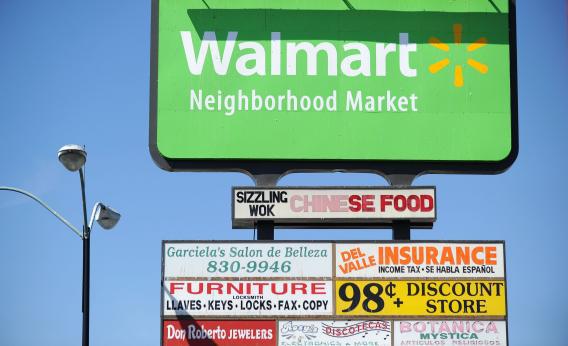We’ve previously covered Amazon dipping its toes in the waters of same-day delivery, a potential slayer of big box retail. On the other hand, Stefanie Clifford writes that Wal-Mart—the biggest box of them all—is also trying this out in the DC suburbs as we speak:
The Wal-Mart tests, the first of which started last week in the Washington suburbs, let customers order toys and other popular gifts, and have them delivered to their homes the same day. The service is $10, and there is no minimum purchase. Essentially, the move transforms the more than 4,000 local Walmart stores into distribution centers — Amazon, by contrast, had fewer than 40 warehouses at the end of last year.
This raises the question in my mind, and not for the first time, of why Amazon merits a price/earnings ratio of 310. For comparison’s sake, Wal-Mart is at 16, Apple is at 15, Target is at 15, Microsoft is at 15, and Home Depot is at 22. If you just compare Amazon’s P/E ratio to the other established retailers you might think “well it has a high valuation because it’s really a high-tech company.” But Amazon also has a much higher P/E ratio than established tech companies. The presumption seems to be that at some future point Amazon will be able to abandon its current model of huge volumes on tiny profit margins and thus supercharge earnings by raising margins. But for that to be the case, you have to assume that no other company will be able to compete with them in the web-based retail space even if they start charging higher prices.
Wal-Mart’s move into the same-day delivery space is a reminder that they, at least, have no intention of taking that threat lying down. The existence of competition doesn’t mean Amazon’s a bad company or a bad business. But all these other companies with drastically lower P/E ratios are also good companies with good businesses—a 310 P/E ratio requires some really heroic assumptions.
